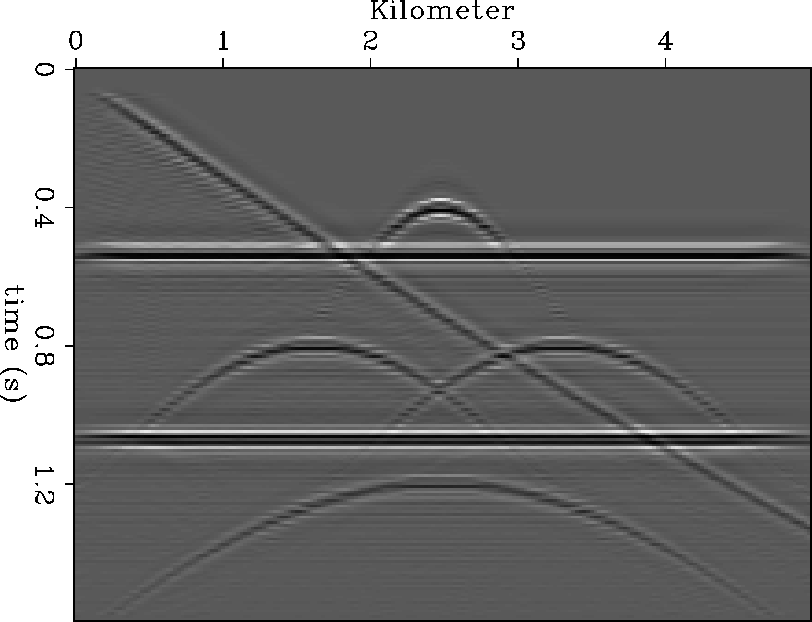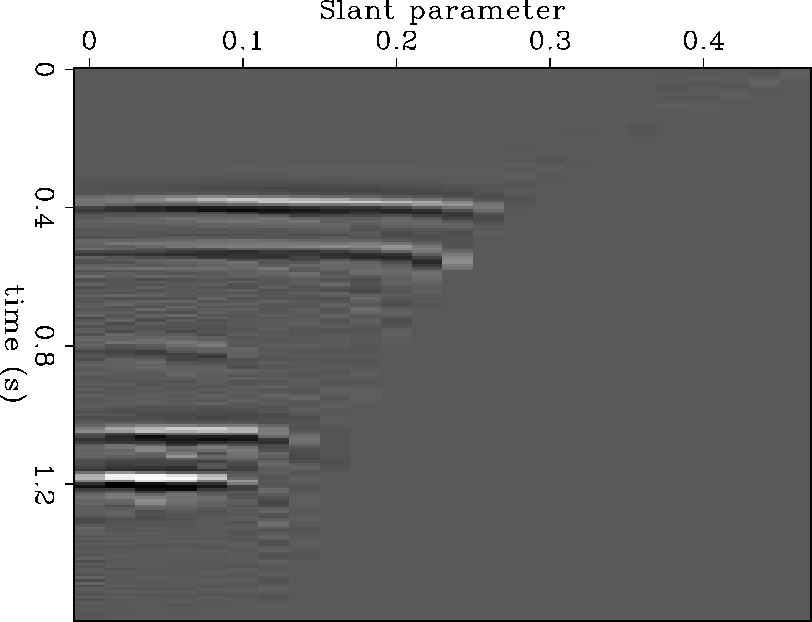




Next: A FIELD DATA EXAMPLE
Up: Lin: Prestack migration
Previous: SLANT STACK TRANSFORMATION AND
I used synthetic data to test the program of prestack slant
stack migration. Two hundred 24-fold CMP gathers were
generated according to the model in Figure 1.
There are two horizontal layers, one slant event, and four point diffractors. A velocity function
V(z)=(2000+2*z) meters per second was used to generate the synthetic dataset
with the prestack Kirchoff modeling program. The record length is 1.6 seconds and
the sampling rate is 8 milliseconds. The CMP interval is 25 meters and
the far offset is 460 meters. The near offset section is shown in Figure 2.
To migrate the synthetic dataset, I followed the processing steps described in the preceding section.
Figure 3 shows one of CMP gathers after slant stack transformation, with
a slant parameter p from 0 to 0.48 seconds per kilometer. After the prestack slant
stack migration, I obtained the gather shown in Figure 4, at the same
CMP location as in Figure 3. After migration
almost all the events were lined up.
Finally, I stacked all the different p sections to get the migration
section shown in Figure 5. Comparing Figures 5 and 1
shows that the migration algorithm works well for the synthetic dataset.
model
Figure 1 A model for generating synthetic data




 nearoffset
nearoffset
Figure 2 A near-offset section of synthetic data




 vslancdp1
vslancdp1
Figure 3 A CMP gather after slant stack transformation




 migcdp1
migcdp1
Figure 4 The CMP gather in Figure 3 after prestack slant stack migration




 stack
stack
Figure 5 Migrated synthetic data










Next: A FIELD DATA EXAMPLE
Up: Lin: Prestack migration
Previous: SLANT STACK TRANSFORMATION AND
Stanford Exploration Project
11/16/1997





